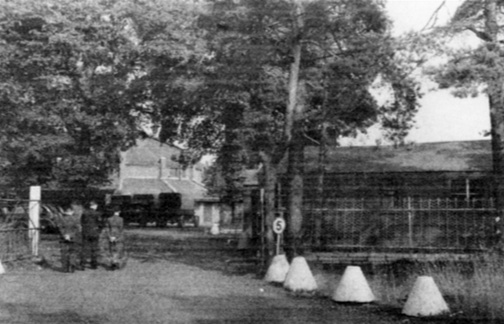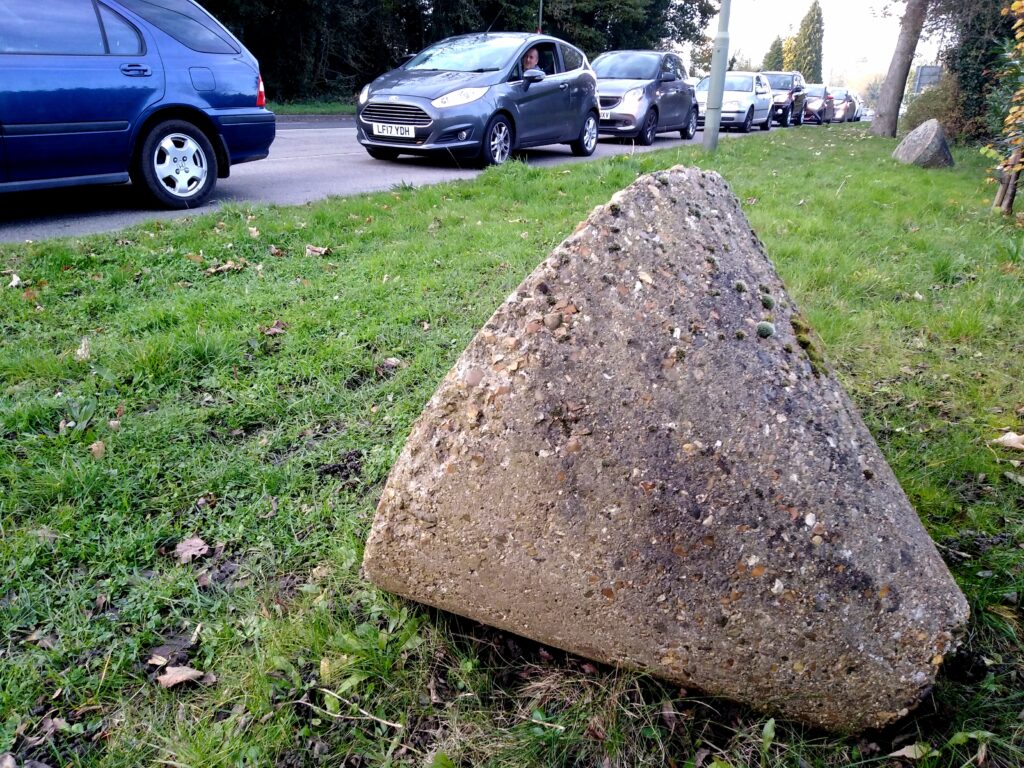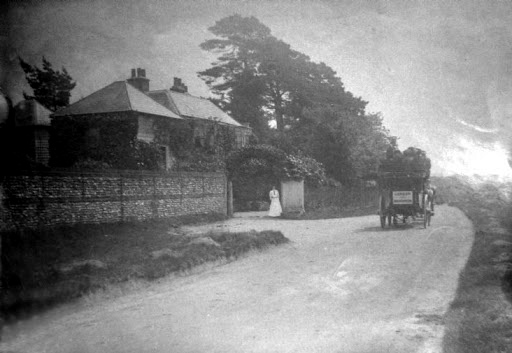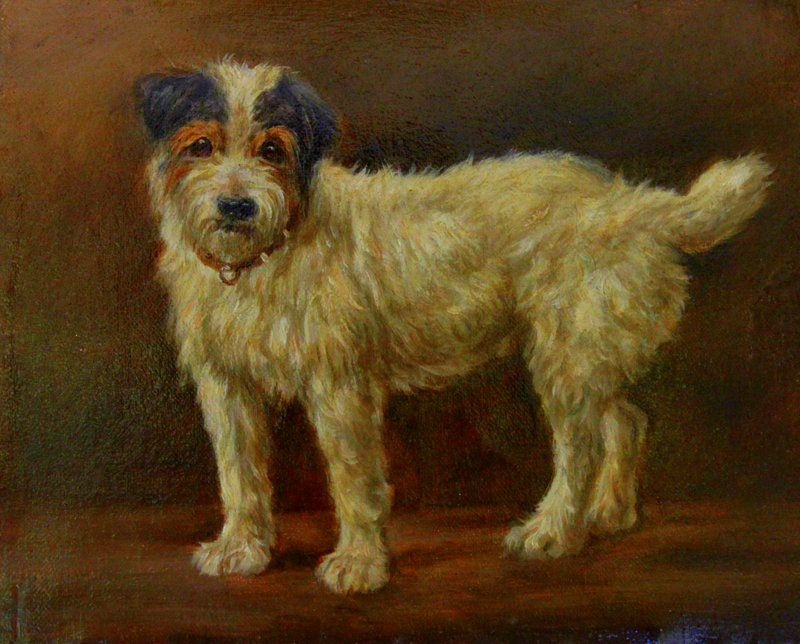LITTLE BURGH – A LITTLE HISTORY
Everyone knows where to find the ASDA superstore. When it opened, nearly 30 years ago, their slogan was “It ‘Asda be ASDA.” Some folk will remember the Kinloss Cash and Carry store that preceded it, while older residents might even remember the WWII army depot; maybe you’ve stumbled across the concrete buoys, intended for blocking roads to enemy vehicles, that sit on the grass verge outside ASDA. Few, if any, will remember the Riding School, now buried beneath the car-park, established by the Colman family who lived at the mansion in Nork Park.

The concrete buoys outside the WW2 army depot.

The area we are talking about is sometimes referred to as Little Burgh. Indeed, there was a house called “Little Burgh” that stood roughly where the ASDA petrol station is today. An account of Banstead written in 1801 states that the house was built in 1786 by Christopher Buckle, who then occupied Nork House (built in 1740).

We have an early description of the Little Burgh house from a sales notice placed in the Morning Post in 1846:
“TO BE LET, a genteel and roomy Cottage residence, adapted for a respectable family or for a sporting gentleman, pleasantly situated on Borough-heath, containing drawing room and closets, library, housekeeper’s rooms, kitchens and numerous and excellent domestic offices; also a coach-house, stabling for four horses, cowsheds, yards, shrubberies, walled gardens, and a plentiful supply of excellent water”
A notable occupant of Little Burgh House was George Frederick Hudson. As oldest tenant on the Nork estate, he was there, on horseback, to greet the Earl and Countess of Egmont as they arrived at Nork House in 1875. Their carriage was escorted by the band of the 25th Surrey Volunteers (maybe the first ‘Music in Nork Park’)
Another occupant of Little Burgh House was the artist, George Earl, who painted animal pictures, primarily dogs. He was an early member of the Kennel Club. He painted this picture of ‘Caesar King Edward VII’s dog. George Earl died in 1908, leaving £8,000 to his widow, Frances. Little Burgh was sold the following year. Then, it included 4/5 bedrooms, outbuildings, a three-roomed cottage, gardens and grounds. In 1911, Gordon Colman married Miriam Hankey in Fetcham church, before moving into Little Burgh House.


So why was the house called Little Burgh? When Christopher Buckle built the house, he named it after the nearby manor called Little Burgh, which had been purchased by his family in 1627. Actually, the house stood outside the grounds of the manor. An account of 1540 records that Richard Covert, a free tenant or free-holder, held 2 virgates of land of 200 acres called “Lytle Barrow” for the rent of one pound of cummin.
Mention of cumin seed is interesting, not only because we tend to think of cumin as a modern addition to our kitchens, but also because it helps us to trace Little Burgh further back in time to 1325, when Henry de Bergh, a bailiff and farmer of Banstead, held 2 virgates of free land, for which he paid 23s 6d in annual rent and 1lb of cummin.
In medieval times, cumin was used in cooking and as a medical or herbal remedy. Also, it was not uncommon for annual rents to be paid in spices, primarily cumin and pepper – hence the term peppercorn rent.
It is likely that the cumin was imported from overseas rather than grown locally. Of course, nowadays you can always buy it at ASDA.
Article courtesy Chris Watkins – chris.watkins7@ntlworld.com
